Jerusalem is one of the oldest cities in the world; it is the Holy City (for the three major Abrahamic religions.) It is the City of David, the Old City, Zion and has been known by 70 different names in biblical and post-biblical literature.
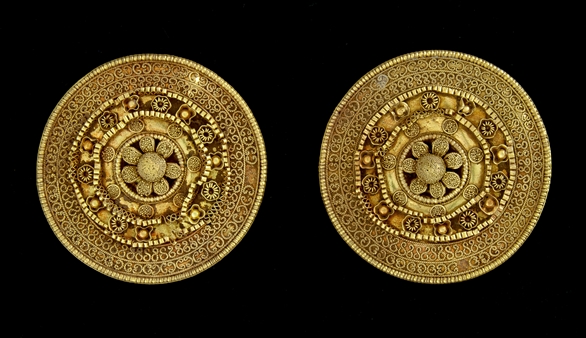
For this particular exhibit, celebrating the Bible Lands Museum’s 20th anniversary, Jerusalem is the City of Gold, just as the legendary Naomi Shemer song, “Yerushayim Shel Zahav,” says as it describes the yearning of the Jewish people to return to Jerusalem after 2000 years. The international exhibition at the Museum, “PURE GOLD,” combined with a parallel project, the “Golden Mile,” displayed outside in the city itself, is a fitting salute to the City of Gold. “PURE GOLD” unveils the mysteries of more than 250 unique gold treasures and what those ornate artifacts say about the ancient aristocrats of Greece and Rome, Mesopotamia, China, Egypt, Persia and the Black Sea.
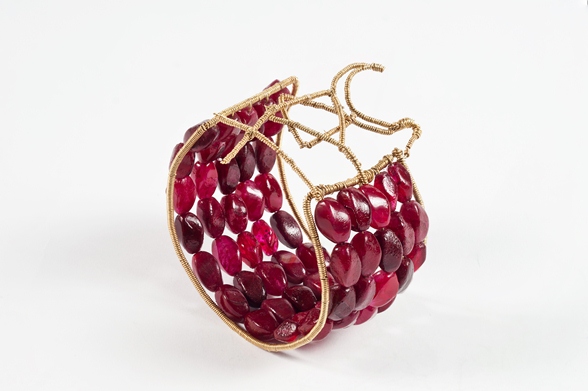
The counterpart “Golden Mile” project showcases the works of Jewelry and Fashion students at the Bezalel Academy of Arts and Design Jerusalem. The integration of these two exhibits together brings “the exquisite art of the ancient world into the contemporary focus of the artists of tomorrow,” according to Museum director Amanda Weiss.
Gold is a metal that doesn’t blend with other metals, and it doesn’t rust, break or lose its original glow. The longevity of gold makes it one of archeologists’ favorite artifacts because upon discovering a golden treasure, it is possible for it to be fully intact, shining, and radiant. The “PURE GOLD” exhibit, researched and catalogued by guest scholar Professor John Boardman of Oxford University, is divided by regions, distinguishing the importance of gold to the various ancient cultures.
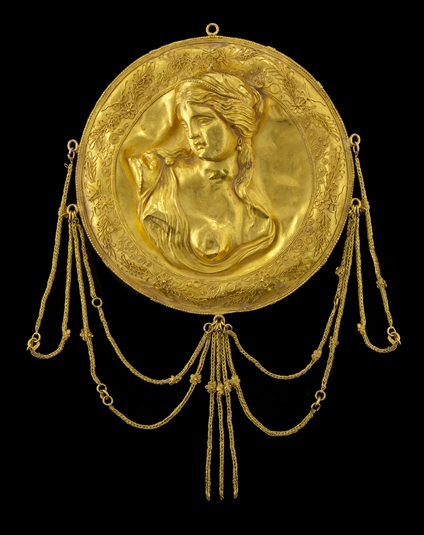
In the ancient Greek-Roman world, known for wealth and fine art, where gold was absent in their natural resources, so craved and desired gold that they imported the precious metal from the Black Sea. In the intricate and complex pieces of gold jewelry, one can discern plainly how the Greek-Roman culture was infused into their works of art. For example, earrings spiraled into the form of lion heads and necklaces slithered into the shape of a snake illustrate the significance of animals as protective powers; wreaths and head crowns as burial gifts for the deceased demonstrate the wish for eternal life like the Gods and Goddesses; a pin with the face of Athena, Goddess of wisdom and war and earrings with the face of Eros, God of Love, show the lofty admiration the people had for the Gods and Goddesses, believing in their power in everyday life. Some of the pieces also conveyed the considerable influence of Egypt, for example a pair of earrings in the shape of sphinxes. With all its intricate technologies and imagination, the Greek and Roman jewelry displayed is utterly spectacular.
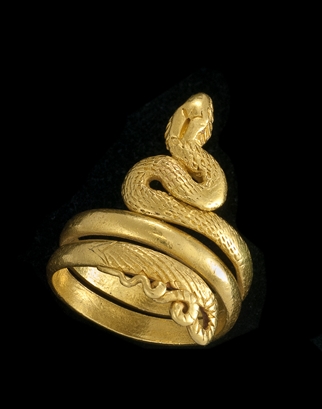
Gold was the color of the sun for the ancient Egyptians, so knowing this symbolism is important for understanding the gold pieces from Egypt. Gold was also important to the Egyptians as a material because “gold lasts forever,” so they saw it as a stable natural material representing eternity. The Egyptians are well known for placing a colorful gold mask on their mummies, in order for the Sun God to sustain the body in the after-life.
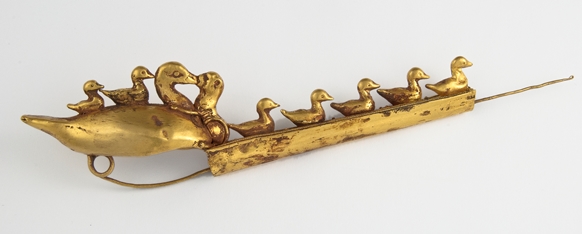
The Bible declares that we must avoid gold, to avoid making idols. In the Levant and the Bible section of the exhibition, the pieces are, contrasting to the others in the exhibit, reserved, representing the belief that gold has magical powers, but only if used for internal purposes and not for show. Other rare and breath-taking artifacts of the exhibit included a set of belts with dragon buckles worn by soldiers in ancient China, a pin of a duck being attached by a small quadruped from Etruria, a region in Italy before the Roman Empire (9th to 3rd centuries BCE) along with an amazing collection of Etruscan fibulae, and daggers from Persia with handles in the shape of lion heads and other flashy gold armor, which legend says blinded the Greeks when the Persians fought them in battle.
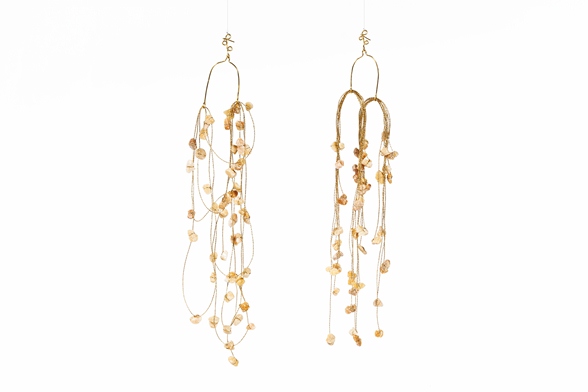
After learning the secrets of this magical metal at the “PURE GOLD” exhibit, I traveled to the city, to Kikar Safra, where the street exhibit, the “Golden Mile,” is displayed. The first-year students at Bezalel, inspired by the “PURE GOLD” exhibition, researched and investigated gold (its history, symbolism, economic value, modes of production, etc.), and then were asked to create a tribute to Jerusalem through gold both as a concept and as a material. “By initiating this project, the Museum has provided a unique opportunity for close to 40 students who were privileged to personally experience the artifacts before they were installed in the [“PURE GOLD”] exhibition,” commented Weiss. What resulted from the students were pieces of art that represented elaborate stories about Jerusalem as well as the students’ personal relationship with the City of Gold. For example, one student created earrings made from Jerusalem stone, symbolizing the difficulty and struggles for women in Jerusalem. Another student made a coexistence bracelet with the symbols of Judaism, Christianity, and Islam side-by-side, epitomizing Jerusalem society. There is a necklace made of tickets from the Light Rail, a new and modern addition to the Holy City, and there is a structure that tells the story of Ethiopians making aliyah to a “New Jerusalem,” or Yerus, as she titled the piece.
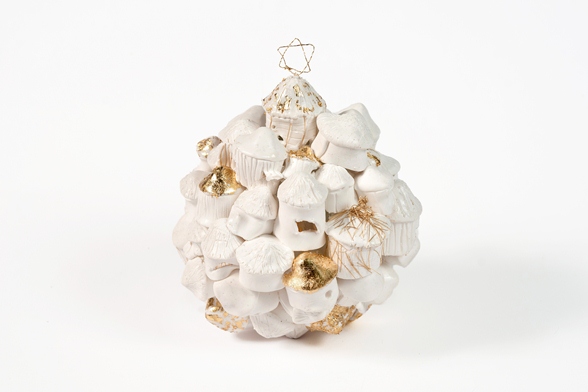
The works on display at the “Golden Mile” outdoor exemplify the past and the present, the ancient and the modern, an exquisite connection with the “PURE GOLD” exhibition. “This new exhibition and its concurrent cooperative exhibit with the Bezalel Academy reflect the innovative nature of the Bible Lands Museum and its many exciting cultural and educational activities,” says Weiss. She continues, “It is a tremendous privilege to continue in the footsteps of the Museum founders by taking their vision and building on it exponentially as we reach out to ever greater audiences. In the words of Dr. Elie Borowski (1913-2003), ‘The future of mankind has its roots in the past – and only through understanding our history can we build a better future.’”
The Bible Lands Museum is open Sunday, Monday, Tuesday, Thursday 9:30 – 17:30; Wednesday 9:30 – 21:30; Friday 9:30 – 14:00; Saturday 10:00 – 14:00; The “Golden Mile” is on display outside at Kikar Safra 24-7 through September 12th.





